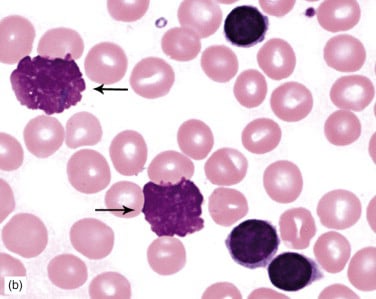Phagocytes
- Phagocytes destroy invading microorganisms by engulfing and digesting them (phagocytosis).
- Neutrophils typically have a lobed nucleus and granular cytoplasm.
- Neutrophils can leave the blood by squeezing through the walls of capillaries to move through tissues, engulfing any pathogens they find.
- Macrophages are large phagocytes found in organs such as the lungs, liver, spleen, kidney, and lymph nodes, rather than remaining in the blood.
- After being made in the bone marrow, macrophages travel in the blood as monocytes, which develop into macrophages.
- Macrophages can act as antigen-presenting cells (APCs).

